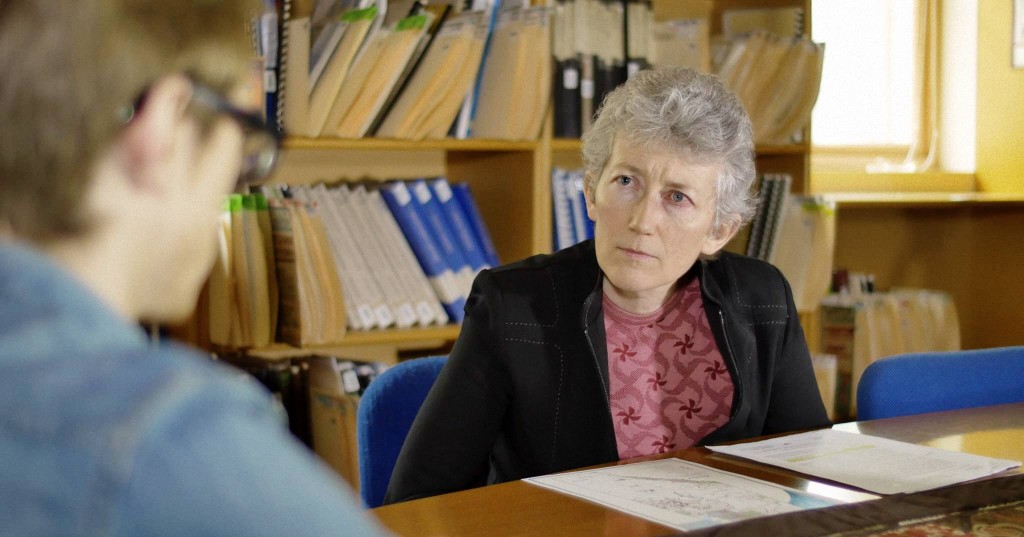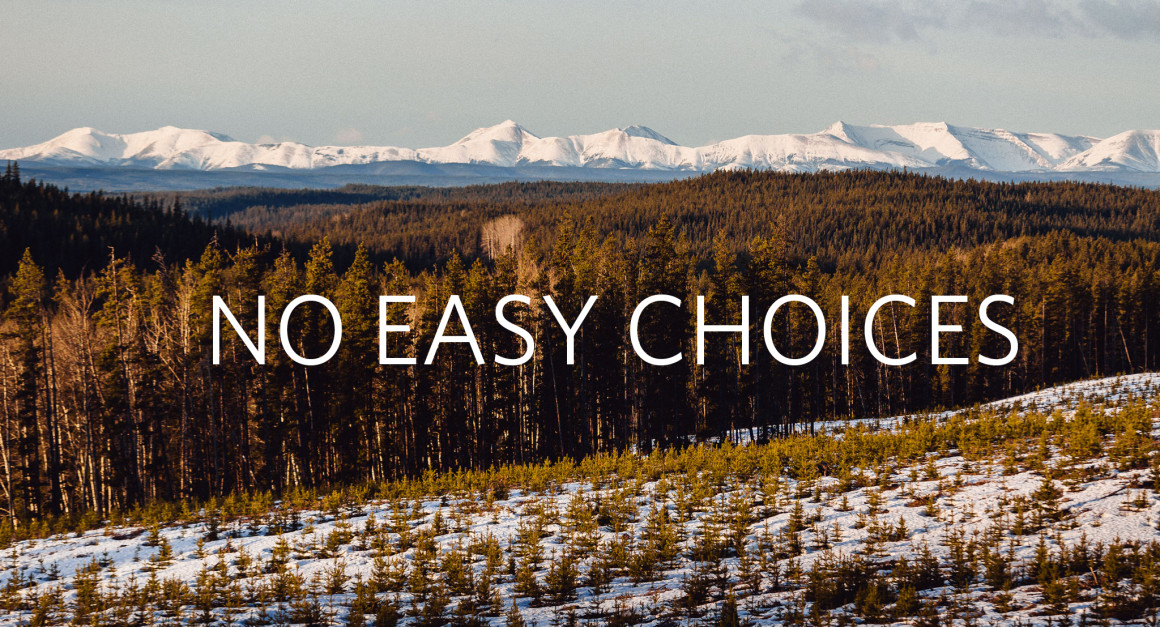
Why Alberta is killing its wolves to save its caribou
By Sean Willett — April 9, 2015
[dropcap style=”normal”]I[/dropcap] first learned about Alberta’s wolf culls in Biology 313, Intro to Ecology. The lecture had begun by the time I arrived, and I began to unpack my things as the professor finished explaining the purpose of the day’s class. We were examining a case study in ecological mismanagement, a real-life example of how competing interests and government inaction makes questions of conservation less simple than they should be.
The students were presented with a scenario — we were to imagine ourselves as employees of the Alberta government, tasked with finding the best solution to the escalating problems faced by the Little Smoky woodland caribou herd. The herd’s numbers were declining rapidly, and it was up to us to examine the relevant evidence and decide the best course of action.
After about half an hour, our professor, Kyla Flanagan, asked us what we found. Not everyone had the same conclusion. Some thought we should target the caribou’s top natural predators. Others recommended placing caribou calves in pens. One student even suggested allowing the Little Smoky caribou to die off, and shifting conservation focus towards other, healthier herds.
However, most students agreed that the best course of action was to begin restoring the caribou’s environment, as it was clear from the evidence that the cause of the decline was the increased presence of industry in the Little Smoky range. If we stopped these disturbances, we theorized, we would save the caribou.
That was when the lesson of the day’s class was brought home. Our professor explained that while habitat restoration was by far the best way to establish a sustainable caribou population in the Little Smoky region, this is not the choice the Alberta government made. Instead, due to reasons not based on scientific evidence, the government chose to kill wolves, gunning them down from helicopters and poisoning them with tainted meat. With that revelation, the class ended.
The reasons behind this choice, as I was to find, were not as simple as they should be.
[hr gap=”40″]
[dropcap]I[/dropcap]t helps to go back to the beginning, before the Little Smoky caribou herd became one of the most controversial ecological problems in Canada.
Before the herd made headlines, it was just one group of caribou among many, barely a blip on the radar for the provincial government. Caribou only started to become a public matter in the late 1970s, when government scientist Michael Bloomfield raised concerns over steadily declining populations. However, little was done to address what was thought of as an inconsequential and temporary issue.
But as time went on, the situation became worse for Alberta’s caribou. Logging moved deeper into caribou ranges, followed by the province’s expanding energy sector. Formerly pristine natural habitats were fragmented, and caribou numbers continued to decline, especially the woodland caribou north of the town of Hinton, in the range that would come to be known as Little Smoky.
A map of caribou ranges in Alberta. The Little Smoky caribou range is highlighted in red.
Woodland caribou are listed as threatened by the federal government, and are considered an umbrella species. This means that protecting caribou indirectly benefits many other species that live in their ecosystem, making these animals a vital part of conservation in Canada.
As these caribou began to quickly die off, more people took notice. This included Flanagan, the ecology professor that first introduced me to the plight of the Little Smoky herd.
“About 10 years ago I worked for Parks Canada for a brief co-op work term, and I did a population viability study on those caribou,” Flanagan said. “Even 10 years ago, the outlook for those caribou wasn’t great, and that caused some worry and panic.”
This panic resulted in an influx of researchers who raced to find what exactly was causing the caribou of the Little Smoky range to decline so rapidly. Stan Boutin, a professor at the University of Alberta and the current Alberta Biodiversity Conservation Chair, was among the researchers who investigated the decline of the Little Smoky caribou. He, along with many other ecologists, immediately took notice of the intense amount of environmental disturbance happening within the caribou’s home range.
“There had been extensive forest cutting for a number of years,” Boutin said. “In addition, there had also been ongoing energy-sector development in that area, with seismic lines and roads cutting through large portions of the range.”
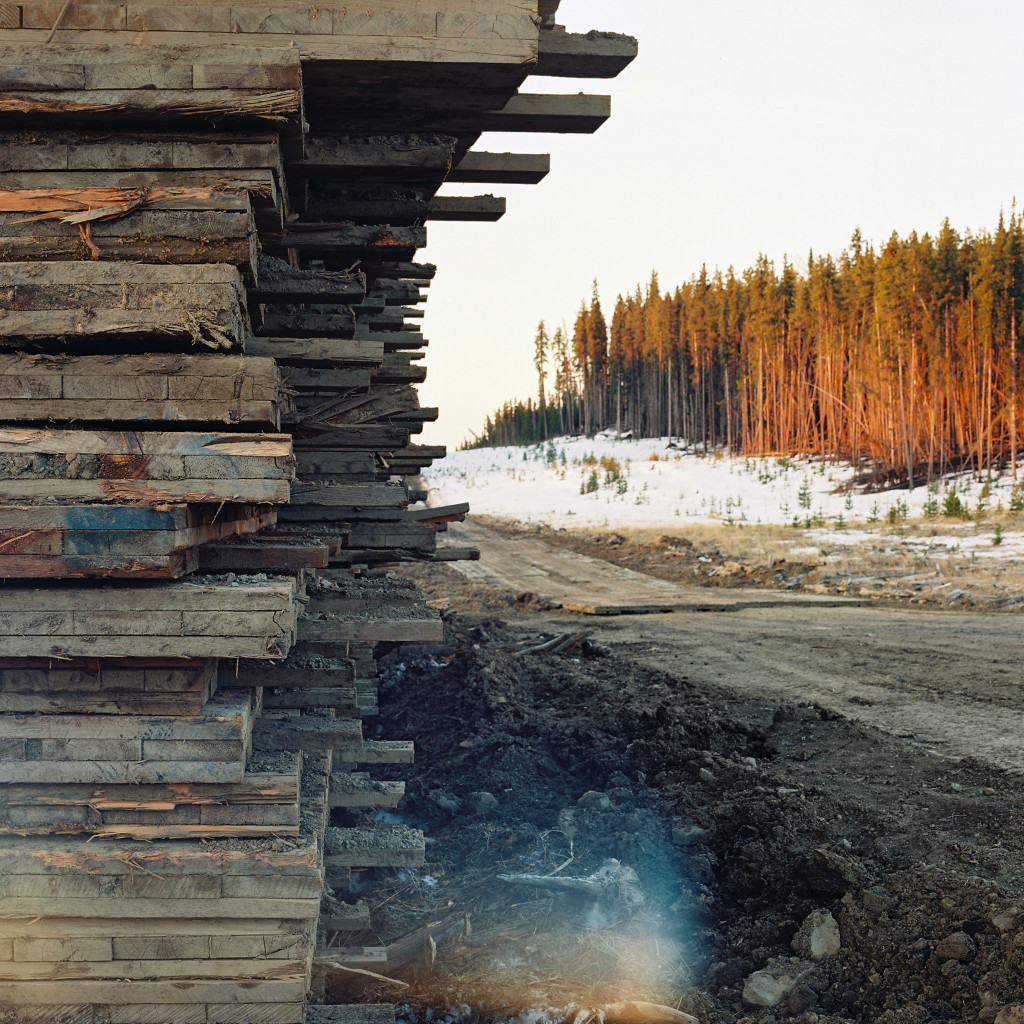 Due to this combination of logging and oil and gas development, an increasingly large portion of the Little Smoky range was disturbed due to human activity. But it wasn’t simply this disturbance that was killing the caribou. The true threat was what took advantage of this upturned environment.
Due to this combination of logging and oil and gas development, an increasingly large portion of the Little Smoky range was disturbed due to human activity. But it wasn’t simply this disturbance that was killing the caribou. The true threat was what took advantage of this upturned environment.
Boutin and other researchers found that the forestry in the Little Smoky range had replaced dense, older forest with sections of sparse young forest growth. This young forest attracted new types of grazers, such as deer and moose, but it also attracted these animals’ top predator — wolves.
“The creation of young forest had increased moose and deer populations, so the wolf populations went up accordingly,” Boutin said. “Additionally, roads and seismic lines meant these wolves could infiltrate into caribou ranges, so old forest growth no longer provided the refuge the caribou had relied on in the past.”
Without the protection of dense, old growth forest, wolves rapidly killed juvenile caribou. And without young caribou growing into adulthood, the herd continued to shrink. The herd was getting older, and more and more of the older caribou were dying off.
“It’s never been a large herd, but its numbers were declining pretty substantively through to the time they began recovery measures,” Boutin said. “And by that time, their numbers were down very low, certainly less than 100 individuals.”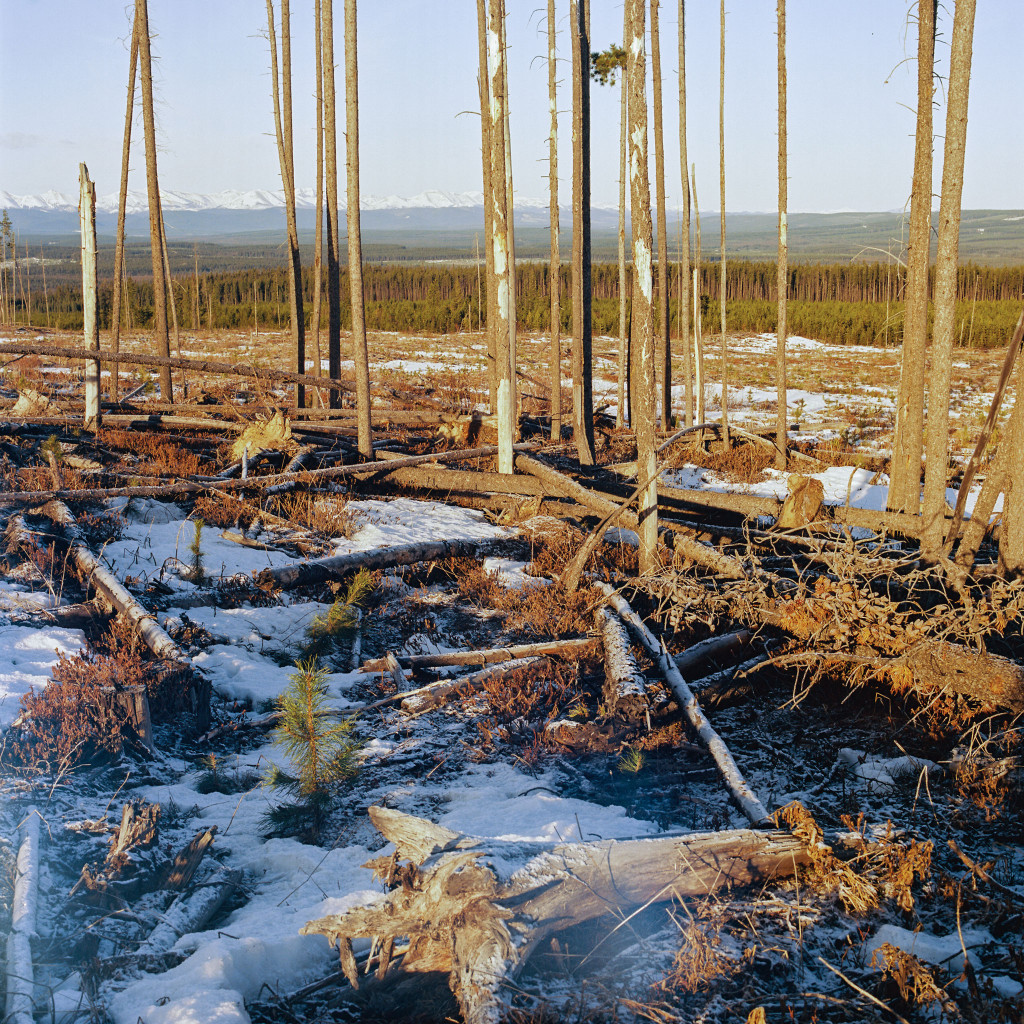
With the Little Smoky caribou herd facing extinction, pressure was mounting on the Alberta government to find a solution to this problem. To do this, they began meeting with ecologists, non-governmental organizations and industry representatives to find a solution that would make all parties happy.
One of these groups was the Calgary-based Alberta Wilderness Association (AWA), which has advocated on behalf of the province’s caribou for decades.
“The AWA was a part of the group of environmental NGOs that sat down with industry and the provincial government in a process back in the early 2000s to decide on an Alberta caribou recovery plan,” explained Carolyn Campbell, a conservation specialist at the AWA. “All of these different sectors sat down and agreed to work on recovering caribou to self-sustaining populations.”
Much like the case study in my ecology class, several different solutions were considered during these initial talks.
“These included a predator cull, or what you would call predator management, and proposals to stop new leasing of caribou range lands to forestry and oil and gas,” Campbell said.
And like our case study, this group came to the clear consensus that strong habitat restoration measures were key for the long-term survival of the caribou.
“The group said at the time that there needed to be a real focus on the habitat, that there would be new range plans developed,” Campbell said. “There was also a separate range planning in west-central Alberta that kind of said the same thing, that there should be a whole swath of different of measures enacted.”
But none of this, of course, ever happened.
“What the government actually moved forward with was predator control, starting in 2005,” Campbell said. “In this area, it was felt by them that the wolf cull should be the primary tool that they would use.”
[hr gap=”40″]
[dropcap]W[/dropcap]hen I called Dave Hervieux to talk about the wolf culls, I could tell he expected the worst. As Alberta’s provincial woodland caribou specialist, and one of the people who instituted the predator management program, Hervieux has received much of the public blowback for the controversial decision to kill dozens of wolves every year.
“To have a beneficial result in respect to caribou bolstering objectives, one needs to achieve a very significant reduction in the wolf population in that local area every year,” Hervieux said. “Somewhere between 50 and 70 per cent of the wolf population needs to be removed in a given year in order to have the results that were hoped for.”
In order to meet the level of wolf removal needed to reach the program’s intended effect, the government uses helicopters to locate and shoot wolves from the air. This technique is used to remove the majority of wolves every year and, despite this method’s apparent brutality, it allows the government to be sure the animals being killed are wolves.
The other technique used is less precise. Strychnine-laced meat is left scattered around a larger piece of bait, buried in the snow in an attempt to ensure only wolves and other canines find it. This method has been employed to make up for the shortfall in helicopter kills during difficult years.
“The two techniques taken together have allowed us to get to where we need to with respect for wolf population reduction on an annual basis,” Hervieux said. “If we don’t get to the level of reduction in the wolf population on an annual basis then the program is pointless. It would just be a silly waste of wolves.”
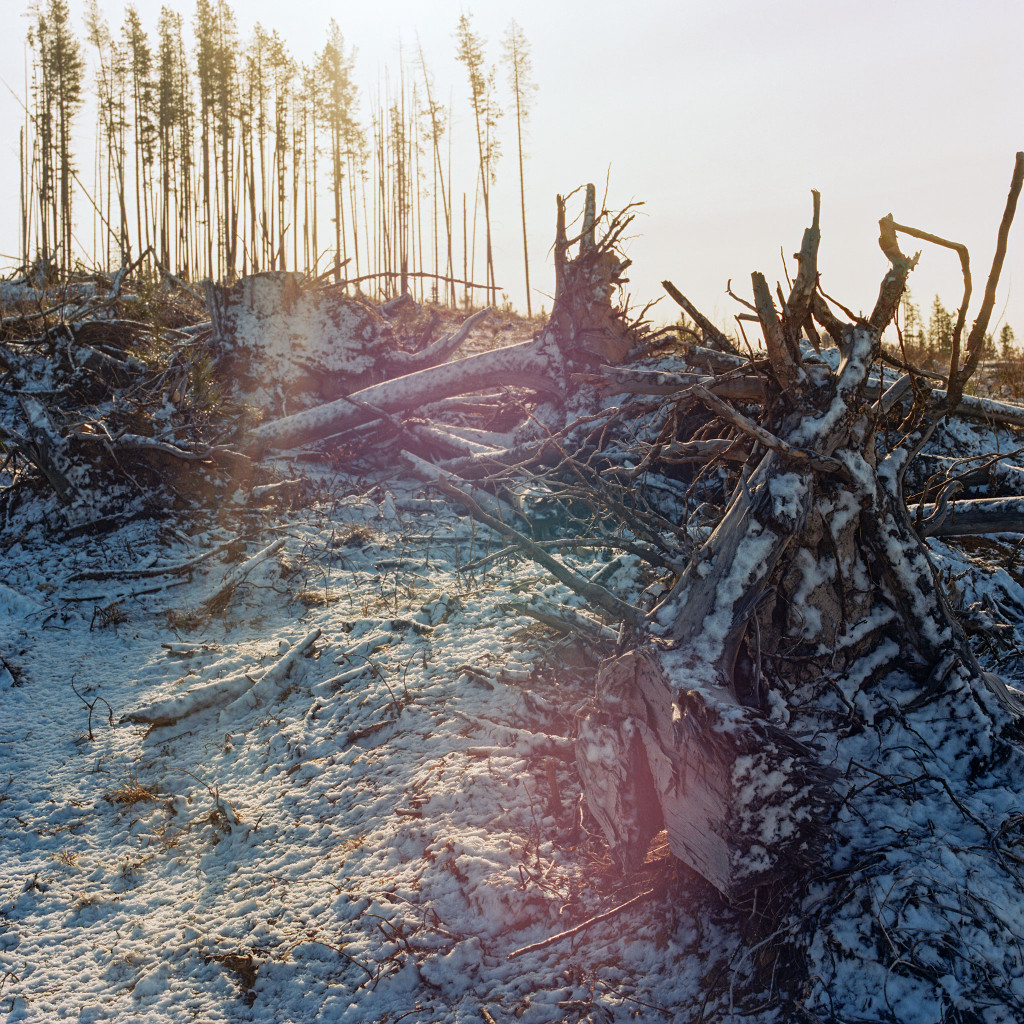 While efficient, the gruesome nature of the wolf culls has not escaped the public eye, and has drawn widespread backlash from media, the public and even parts of the scientific community. Hervieux has found himself in a media firestorm, despite only being one of many people involved in making the decision to enact the cull.
While efficient, the gruesome nature of the wolf culls has not escaped the public eye, and has drawn widespread backlash from media, the public and even parts of the scientific community. Hervieux has found himself in a media firestorm, despite only being one of many people involved in making the decision to enact the cull.
I asked Hervieux whether or not it was a difficult choice.
“Well in a way, not so much,” Hervieux said. “The Little Smoky caribou population was in free fall decline, soon to become extinct. It was very clear that was occurring because of unsustainable rates of predation on both adults and calves, and it was pretty self evident that the level of predation was the result of wolves. So the decision was, do we want those caribou to remain or not? Yes or no.”
Hervieux isn’t wrong. If the wolf culls weren’t instituted a decade ago, the Little Smoky caribou would have been wiped out. One study, which includes both Boutin and Hervieux as authors, found that the predator-management program indeed stopped the decline in caribou numbers in the Little Smoky herd.
However, it also found that while populations numbers haven’t dropped, they haven’t risen either. The population has remained steady at fewer than 80 individuals, which Boutin attributes partially to the inherent difficulties that come with trying to rehabilitate such small populations.
“When you start to get down to only 30 or 40 females you can just get a series of bad-luck years,” he explained. “You don’t have to have many bad-luck situations to wipe out the production for that year. If you wait until a population gets that small you have that much more difficulty in trying to recover it.”
Meanwhile, the Little Smoky range itself has become increasingly affected by human activity. As of 2012, an unprecedented 95 per cent of the range is considered disturbed, with seismic lines and roads passing through almost all of the area that the Little Smoky caribou call home. And while no new energy or forestry leases have been sold in the area since 2013, nothing has been done to slow already established industry development.
This is all in spite of a recovery strategy for woodland caribou released by the federal government in 2012, which made it clear that habitat rehabilitation was to be a priority in caribou range lands. The strategy also required that the Alberta government publish new range plans, which would outline how the government will proceed with caribou recovery into the future.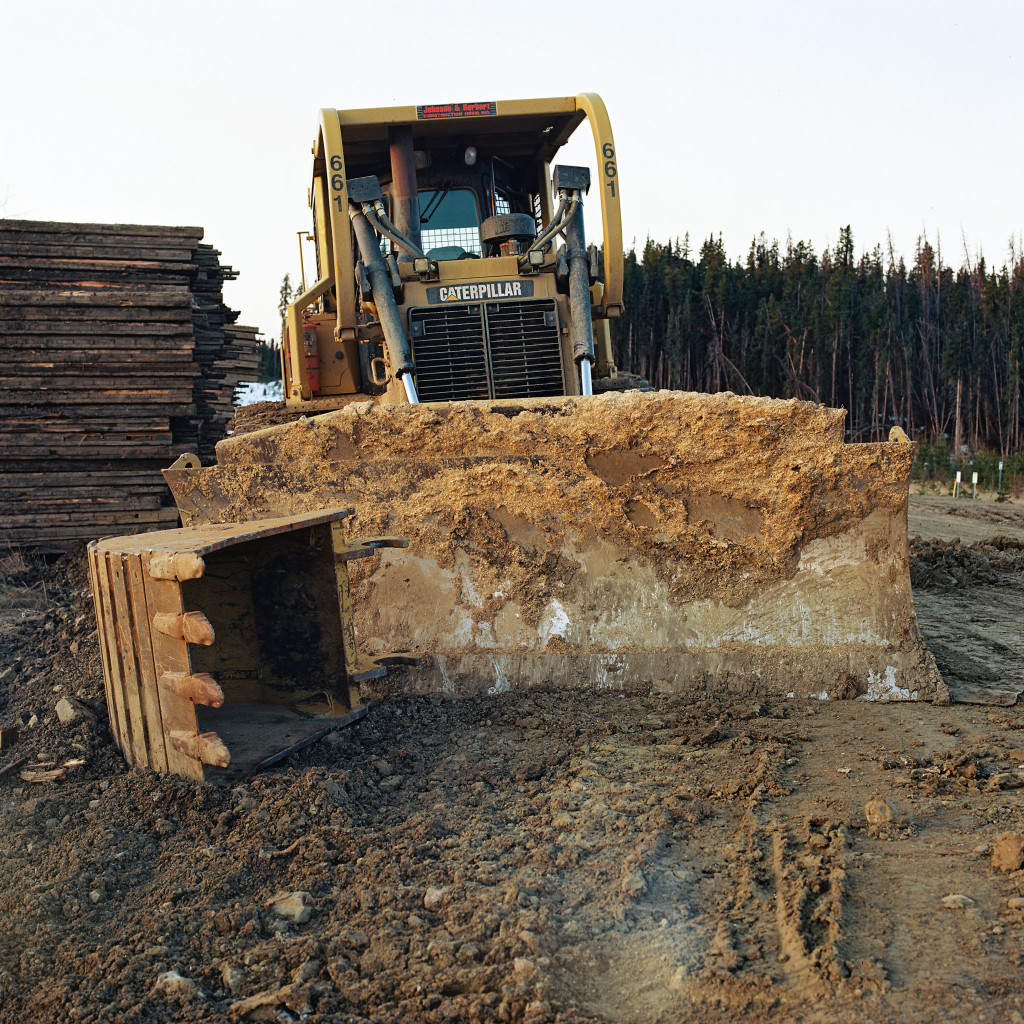
These mandatory range plans include one for Little Smoky. This plan has yet to be released, despite its original due date in 2013.
Delays such as this are why organizations like the AWA, who initially supported predator management programs, have taken a stance against the wolf cull. Campbell is one of many claiming that without any long-term plans to improve the caribou’s habitat, killing wolves does little but preserve the status quo.
“They’re just treating caribou as this showpiece that they want to keep alive by any means, but they aren’t self sustaining,” said Campbell. “So it’s an easy choice, and we don’t support the wolf cull. The Alberta government is making it an easy choice by continuing to behave in a disgraceful way that shows no serious effort to actually abide by the recovery strategy requirements.”
Other problems have been raised about the nature of the wolf cull, including possible ecological changes caused by the removal of a top predator from an already troubled
ecosystem. And as Flanagan teaches in her ecology class, changing an ecosystem can have unintended effects.
“Removing one of the caribou’s predators also has implications for other species, in particular the deer,” Flanagan said. “Deer and caribou are competitors, and there has already been evidence of the cascading effects in the competitive relationship between these two species.”
Ecologists also question the use of poisonous bait, as scavengers are able to ingest the toxins when feeding on wolves killed by the traps.
Of course, there are also ethical problems with the wolf cull. After all, why is it right to kill one animal to save another? A group of scientists brought this issue into the spotlight early this year by publishing an article entitled “Maintaining Ethical Standards during Conservation Crises.” The article condemned the Alberta government for killing wolves as inhumane, and claimed scientists like Boutin and Hervieux took advantage of the wolf cull to conduct “unethical animal research.”
Carolyn Campbell is a conservation specialist at the AWA, which does not support Alberta’s wolf cull.
Despite these problems, there is no denying that the wolf cull has stabilized the caribou population in the Little Smoky region, at least for now. And this is something habitat restoration on its own couldn’t have done.
“It would probably take up to 40 years for the disturbance in the Little Smoky range to heal itself,” Campbell said. “There is some technology being developed that might help us speed things up with reclaiming the seismic lines, but even with that it would still take decades.”
This is why the AWA was initially supportive of predator management, as it could have been used as a stop-gap measure while waiting for longer-term solutions to come into effect. Campbell says the AWA might even support a wolf cull in the future, but only if it came alongside the recovery of caribou habitat.
“There would still, unfortunately, have to be a period of time where predation is managed in the short term,” Campbell said. “This may have been avoided if we had acted sooner, but we didn’t. There are no easy choices left.”
[hr gap=”40″]
[dropcap]W[/dropcap]hile there is little debate over the fact that the Little Smoky range needs to be rehabilitated, there is a reason the Alberta government has been unable to begin recovery in the area.
“If it was easy, we would have done it already,” Hervieux explained. “It’s pretty hard stuff because a lot of people work in the woods, in this caribou range. There’s a lot of timber and oil and gas development and a great deal of revenue is generated in those areas. Trying to find solutions that are going to work on the caribou side of things and not extremely challenge the livelihood of many people is pretty challenging.”
This conflict with industry is the main obstacle facing habitat restoration and is the primary reason the Little Smoky range plans have been delayed. Campbell and AWA have put forward several potential solutions, though they insist that forestry in the area has to stop completely.
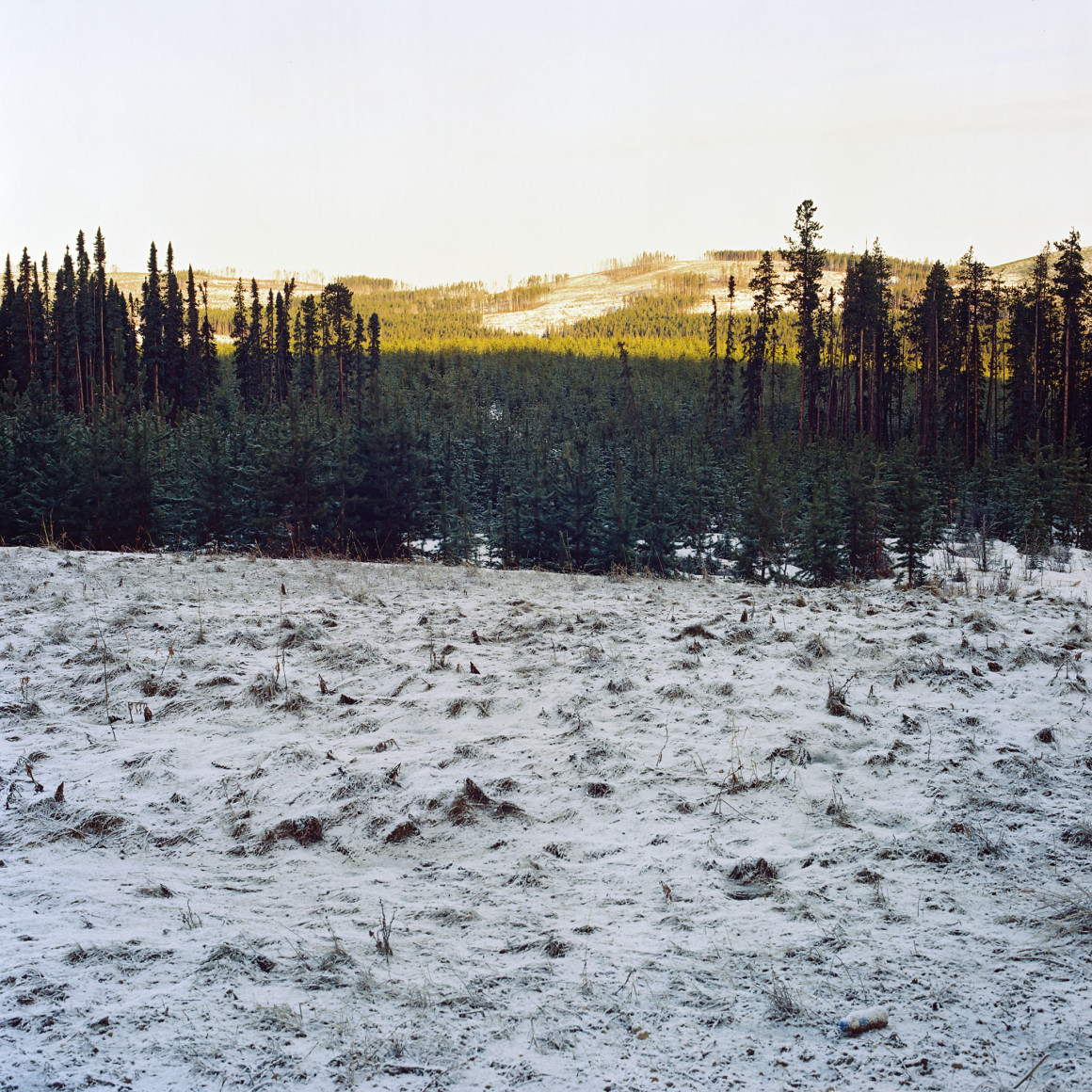 “They would have to retire, meaning buy-out, all the new forestry leases in the range,” she said. “Forestry would also have to stop in at least a 20 km buffer around it because if you’re logging right up to the edge intensively, which has been happening historically, then that’s going to stimulate prey populations, and therefore predators.”
“They would have to retire, meaning buy-out, all the new forestry leases in the range,” she said. “Forestry would also have to stop in at least a 20 km buffer around it because if you’re logging right up to the edge intensively, which has been happening historically, then that’s going to stimulate prey populations, and therefore predators.”
To minimize the economic impact, Campbell says that the government could redistribute forest leases in other parts of Alberta and British Columbia to make sure forestry companies are not unfairly hurt by this decision. Along with forestry, the AWA also wants to end recreational access to the Little Smoky range to prevent snowmobilers from creating even more pathways for wolves to access caribou.
However, Campbell understands that asking oil and gas to halt their operations in the area is an unrealistic request, especially in Alberta. Instead, she proposes that existing industry activity be streamlined and redistributed, in order to limit the disturbance it causes.
“Rather than have multiple operators each putting down separate 100 m parallel roads through big areas of formerly intact habitat, there should be really strong total footprint limits that the government enforces,” Campbell said. “New technology also exists that would allow for oil companies to share their extraction equipment, further reducing their footprint. It’s not business as usual, but it would still allow a fair bit of economic benefit and would really be a serious way to allow the habitat to recover.”
Because of this, Campbell is optimistic about the future of the Little Smoky caribou and genuinely believes that there is a future for these animals.
“It’s too important to lose hope,” she said. “You just have to keep trying what you see as the next best three or four things to do because it’s too important to give up.”
Hervieux also believes the Little Smoky caribou can one day become self-sustaining, no longer needing predator management to keep them alive.
“You know, they’re viable. They’re biologically viable. They continue to survive and they continue to reproduce. If we did not believe Little Smokey to be recoverable than I think the honourable thing to do would be to say that, to say that from a professional and technical standpoint. But they are viable. They just need to be cut a break. And they need to have an opportunity for a better future,” said Hervieux.
“We really need to ask ourselves, though: do we in Alberta want to leave space for those animals through our management?”
Boutin doesn’t think that we do.
“I know for sure we will be getting into these situations in the future more and more,” he said. “Even if we had all the information on the table, my guess is that society would still have decided to exploit those natural resources at the expense of the biodiversity of the ecosystem.”
Our priorities, he explained, do not lie with the caribou of Little Smoky.
“I think if you actually look at society, and Alberta in particular, there’s clear indications as to what the priorities are for the clear majority of people in the province, and that’s social and economic well being brought out by our ability to exploit resources,” Boutin said. “I think our only hope is that we recognize we can’t have our cake and eat it too. We’re deceiving everybody if we think we can have strong, viable caribou populations in the same areas where we do this major exploitation of resources.”
Because of this deception, Boutin can’t help but see a dark future for the Little Smoky herd.
“The only way we can have caribou stay around is to have them as priority somewhere in the province, where caribou is a priority. Not oil and gas, and not forestry.”
[hr gap=”40″]
[dropcap]A[/dropcap]fter hearing so much about the human disturbances on the Little Smoky range, I traveled to the north of Hinton, Alberta, to see the damage for myself.
The range was checkered with large areas of clear cut forest — some of which had begun to recover and some of which hadn’t. Seismic lines cut clear through the forest every few hundred metres, and large industrial facilities were visible between the trees. Piled lumber, abandoned machinery and gas valves dotted the side of the road. There were only a few moments of silence, as trucks transported people and goods between work sites.
We were eventually stopped by a woman in a luminescent vest, telling us there were too many oil workers on the road to continue further north. The only wildlife I saw were a couple of lonely ravens circling above the ruined landscape.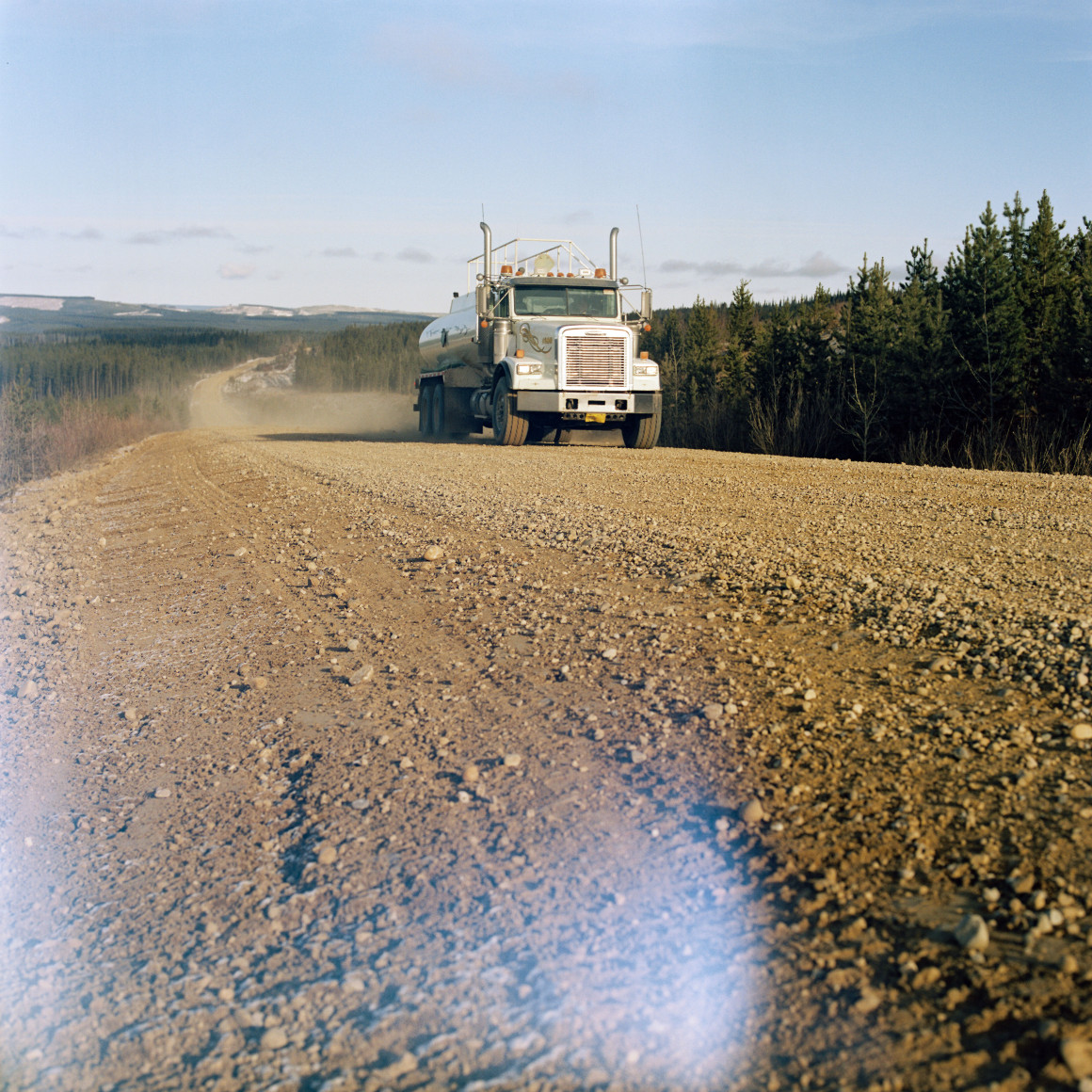
Right now the future of the Little Smoky caribou, and the future of the wolf cull, are uncertain. Alberta’s range plan for the Little Smoky area is due to be published this spring and with it, the fate of these controversial caribou might be decided once and for all.
But even then, the future will be far from certain. Even if plans to recover the caribous’ habitat are promised, what is the likelihood that they will be enacted? Or that the government won’t backtrack on this decision when pressured by industry? Or that the Little Smoky caribou might die off anyway, due to sheer bad luck, despite our best efforts?
There is also, of course, the continuing issue of the wolf cull. How much longer will it have to last? And if it takes another 30 or 40 years of brutally killing wolves, are the Little Smoky caribou even worth saving? These are difficult questions, and I’m becoming less and less convinced anyone knows the answers.
From what I learned in ecology class, this should be simple. There should be one clear path to take, one supported by scientific evidence that is almost guaranteed to work. All we should have to do is find that path, and follow it.
But, after all, nothing is as simple as it should be.

